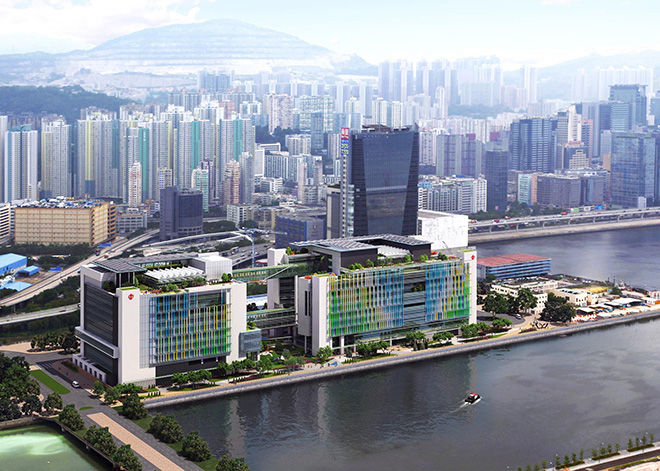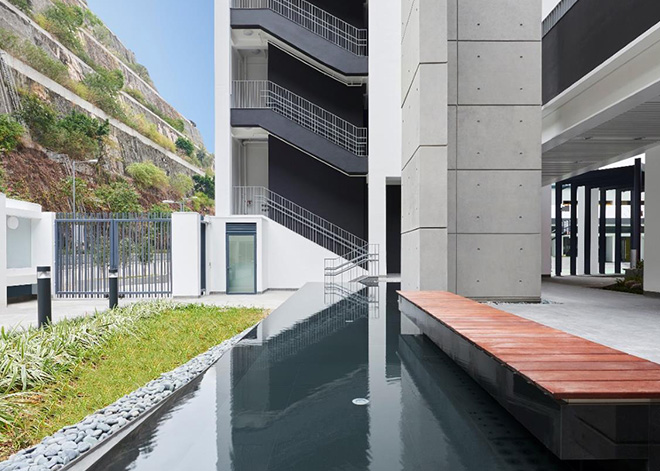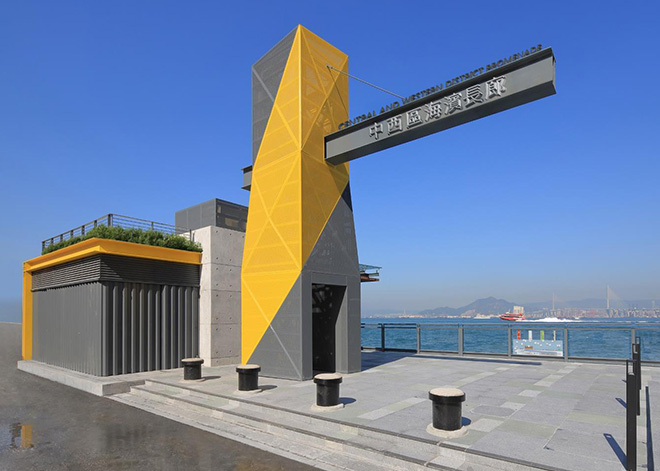| Building Environmental Assessment Method (BEAM) | Quote from BEAM Society, "A means by which to benchmark and improve performance in the planning, design, construction, commissioning, operation and management of buildings." BEAM Plus is a comprehensive environmental assessment scheme recognised by the Hong Kong Green Building Council (HKGBC). Issued in 2012, BEAM Plus Version 1.2 for New Buildings and Existing Buildings is enhanced from the earlier version in providing Passive Design as an alternative method for assessment." |
| Building Energy Codes (BEC) | Building Energy Codes is a suite of guidance that covers five aspects of installation practices, including lighting, air conditioning, electrical and lift & escalator installations. It stipulates the minimum energy performance standards (MEPS) of these installations practices. |
| Buildability Evaluation System (BES) | The Buildability Evaluation System is an assessment and scoring approach to rationalise project designs and facilitate asset maintenance; promote mechanisation and prefabrication; enhance construction productivity and project cost management to achieve value for money in public building projects. |
| Building Information Modelling (BIM) | Building Information Modelling is the process of generating and managing building data during its planning, design, construction and operation stage. The process uses multi-dimensional building modelling software to represent the three-dimensional and digital data of buildings, and adopt digital data environment and unified data structure to enhance team collaboration and productivity. |
| Carbon Audit | A systematic and scientific approach to account for the greenhouse gas emissions arising from the operations of the buildings. |
| Carbon Footprint | The carbon footprint is the measurement of all greenhouse gases an individual produces in daily lives through burning fossil fuels for electricity, heating, transportation, etc, usually in the unit of tonnes (or kg) of carbon dioxide equivalent. |
| Corporate Intelligence (CO-i) | ArchSD aims at enhancing its operational efficiency by applying smart and innovative technologies in the work process through the CO-i development. The core of the proposed CO-i development is a big data bank with linkage to various application systems to facilitate the “Architectural Intelligence”, including integrated project management platform, advanced asset information system integrated with Building Information Modelling (BIM), mobile platform for construction site supervision and work flow digitalisation, etc. |
| Community Green Station | A Community Green Station is operated by non-profit-making organisations to provide support for the community in the collection of low economic value recyclables such as electrical appliances, compact fluorescent lamps, fluorescent tubes, glass bottles and rechargeable batteries. With a view to promoting green living at the community level, the collected items will be delivered to qualified recyclers for proper treatment and turning waste into resources. |
| Considerate Contractors Site Award | It is an award to promote a considerate attitude and good site safety, health and environmental practices for both Public Works and non-Public Works sites. |
| Designated Projects | Designated projects are projects or proposals that may have an adverse impact on the environment. They are covered by the Environmental Impact Assessment Ordinance in which they are categorised into two schedules: Schedule 2 and 3. (Details please refer to A Guide to the Environmental Impact Assessment Ordinance.) |
| Earth Tube | Earth Tubes are a passive design in architecture that enable the transfer of ground source energy to heat or cool ventilation air. They are standard concrete tubes that run underground and precondition the temperature of incoming air before it enters the building, thus reducing the energy required to heat or cool the building. |
| Energy Audit | An Energy Audit is an examination of an energy consuming equipment/system to ensure that energy is being used efficiently. It is an effective energy management tool. By identifying and implementing the means to achieve energy efficiency and conservation, not only can energy savings be achieved, but also equipment/system services life can be extended. All these mean savings in money. |
| Environmental Impact Assessment (EIA) | A process to assess the potential environmental impacts and environmental benefits (in quantitative and qualitative terms) of a project in the early planning stages as well as identify any alternatives or mitigation measures. |
| Environmental Impact Assessment Ordinance (EIAO) | An Ordinance to assess the impact on the environment of certain projects and proposals, for protecting the environment and for incidental matters through the application of the EIA process and the environmental permit system. |
| Extranet | The ArchSD Extranet is a private secured web portal with restricted access to enhance communication and information exchange with external users such as consultants and contractors, and to streamline contract management of works projects undertaken by the Department. |
| Global Reporting Initiative (GRI) | A multi-stakeholder-governed institution which provides a framework for sustainability reporting, which is commonly used all over the world. This framework sets out the principles and indicators that entities can use to measure and report their economic, social and environmental performance. GRI launched its Sustainability Reporting Standards (GRI Standards) in October 2016. |
| Green Building Awards (GBA) | Jointly organised by the Hong Kong Green Building Council and the Professional Green Building Council, GBA is a biennial industry award which aims to provide recognition to building-related projects with excellent performance and contributions in sustainability and the built environment. It also encourages the industry to transform the mainstream market towards wider adoption of sustainable planning, design, construction, management, operation, maintenance, renovation and decommissioning of buildings. |
| Green Contractor Award | Green Contractor Award is organised by ArchSD every year to appraise contractors that have excellent performance in construction sites through demonstrating their environmental and social conscious commitments with the implementation of effective green measures. |
| Greenhouse Gases | Greenhouse gases refer to those which are able to absorb and hold heat in the atmosphere, either occurring naturally (e.g. carbon dioxide, methane, ozone and water vapour) or exclusively resulting from human activities (e.g. hydroflurocarbons). |
| Grey Water | Grey water is the wastewater generated from domestic activities such as hand washing and cloth laundering. It is suitable for reuse as landscape irrigation or even toilet flushing. |
| Hong Kong Energy Efficiency Registration Scheme for Buildings | This scheme was launched by the Electrical & Mechanical Services Department for promoting the application of Building Energy Codes since October 1998. It provides an official platform for interested parties to register their buildings which comply with BECs. |
| Important Tree | Important Trees are trees in the Register of Old and Valuable Trees, or any other trees that meet one or more of the following criteria: trees of 100 years old or above; trees of cultural, historical or memorable significance e.g. Fung Shui tree, tree as landmark of monastery or heritage monument, and trees in memory of an important person or event; trees of precious or rare species; trees of outstanding form (taking account of overall tree sizes, shape and any special features) e.g. trees with curtain like aerial roots, trees growing in unusual habitat; or trees with trunk diameter equal or exceeding 1.0 m (measured at 1.3 m above ground level), or with height/canopy spread equal or exceeding 25 m. |
| ISO 50001 Energy Management System | ISO 50001 is an international standard first published by International Organization for Standardization (ISO) on 15 June 2011, which specifies requirements for the establishment of an energy management system. Adopting ISO 50001 Energy Management System enables organisations to improve their energy performance, which generally includes energy use, energy efficiency and energy consumption, in a systematic approach. Similar to other well-known ISO standards such as ISO 9001 and ISO 14001, ISO 50001 is also based on the PLAN-DO-CHECK-ACT approach to assist organisations in achieving continual improvement. |
| Knowledge Management (KM) Portal | KM portal is to manage the knowledge life cycle from generation, harvesting, formation of practice wisdom and sharing to publishing, monitoring and renewal. The whole process is manifested in the operational regime under a 3-tier system, i.e. the ArchSD Knowledge Bank (K-Bank), branches/divisions KM hubs and knowledge community workspace. |
| Leadership in Energy and Environmental Design (LEED) | The Leadership in Energy and Environmental Design (LEED) Green Building Rating System, developed by the U.S. Green Building Council (USGBC), provides a suite of standards for environmentally sustainable construction. |
| Microclimate Study | Microclimate study acts as an environmental performance factor of the site providing environmental characteristic of the site for the purpose of creating a sustainable environment which provides the greater comfort for the development. |
| Modular Integrated Construction (MiC) | Reference to BD's PNAP, Modular Integrated Construction refers to a construction method whereby free-standing volumetric modules (with finishes, fixtures, fittings, etc.) are manufactured off-site and then transported for constructing buildings. |
| Overall Thermal Transfer Value (OTTV) | A measure of the energy transferred through the envelope of a building and has a direct correlation with energy consumption. |
| Preliminary Environmental Review (PER) | It is a study that determines the current environmental conditions of the project site through inspecting the potential environmental impacts associated with the project and recommending corresponding mitigation measures. All Government Projects are required to carry out PER at the early stage of the projects (Feasibility Study Stage). |
| Practice Note for Authorized Persons and Registered Structural Engineers (PNAP) | It was formerly known as Practice Note for Authorized Persons and Registered Structural Engineers (PNAP) have been issued since 1974. The Building Authority issues practice notes to authorised persons, registered structural engineers and registered geotechnical engineers from time to time to promulgate how the Authority applies and enforces the provisions of the Buildings Ordinance (BO) and its subsidiary regulations as well as other administrative and advisory matters in the administration of the BO. |
| Program on Source Separation of Commercial and Industrial Waste | It has been launched by EPD since 2007. It aims to encourage the property management sector to undertake initiative to set up and implement suitable mechanism to separate and recover waste within commercial & industrial (C&I) premises. This will facilitate the tenants / occupants to practice waste separation and recycling in workplace with ease. |
| Post Occupancy Evaluation (POE) | Post Occupancy Evaluation is a management tool tailor-made to evaluate the performance, assess the effectiveness of sophisticated building services systems after client occupancy, and to address clients' concerns on the functional requirements and energy consumption of their recently completed building projects. |
| Register of Old and Valuable Trees | The Leisure and Cultural Services Department, Agriculture, Fisheries and Conservation Department and Housing Department have identified some 500 Old and Valuable Trees on unleased Government land within built-up areas or tourist attractive spots in village areas to provide priority protection. |
| Smart City | A Smart City is a city which capitalises on new technologies and developments to enhance its systems, operations and service delivery. Smart Cities share one thing in common, the application of information and communications to connect and integrate the systems and services of the city. The goal for Smart Cities is to improve city management and residents' quality of life through the efficient use of resources and service delivery whilst at the same time reducing environmental footprint. |
| Stakeholder | It refers to individuals, groups or organisations which experience directly or indirectly the actions and policies implemented by an organisation. |
| Sustainable Development | Sustainable development is the development approach which meets the desires of the present and preserves the environment and natural resource for the future generations. |
| Testing and Commissioning (T&C) | Testing and Commissioning (T&C) is generally regarded as testing of equipment and systems separately, in order to ensure that they are safe and meet the design requirements. |
| Resource Allocation Exercise (RAE) | It is a practice to schedule activities and assign available resources in an economic way, so that predetermined constraints of resource availability and/or project time are not exceeded. Each HKSAR Government Department has to earmark an amount of Recurrent/Capital spending in October that to be included in the budget of the following year. |
| Universal Accessibility | The concept of Universal Design forms the backbone of Universal Accessibility. It is a design approach to a universally accessible standard in which all products, environments and communications will allow for the widest spectrum of our community regardless of diversity, age and ability. |
| U-value | The rate of heat flow through a material. It is measured as the amount of heat flow through 1m2 of the material for every degree difference in temperature each second. |
| Valuable Tree | Refers to the "valuable trees" in the Register of Old and Valuable Trees which are distinguished in the following categories: Trees of large size; Trees of precious or rare species; Trees of particularly old age (e.g. aged 100 or above); Trees of cultural, historical or memorable significance; and Trees of outstanding form. |
| Vertical Greening | Vertical greening is the application of a vegetative cover to a wall/vertical structure. It serves as the thermal insulation to building to moderate temperature and relative humidity to the site. It also helps in filtrating dust pollution, reducing noise pollution and enhancing the biological diversity of the building and its surroundings. |










